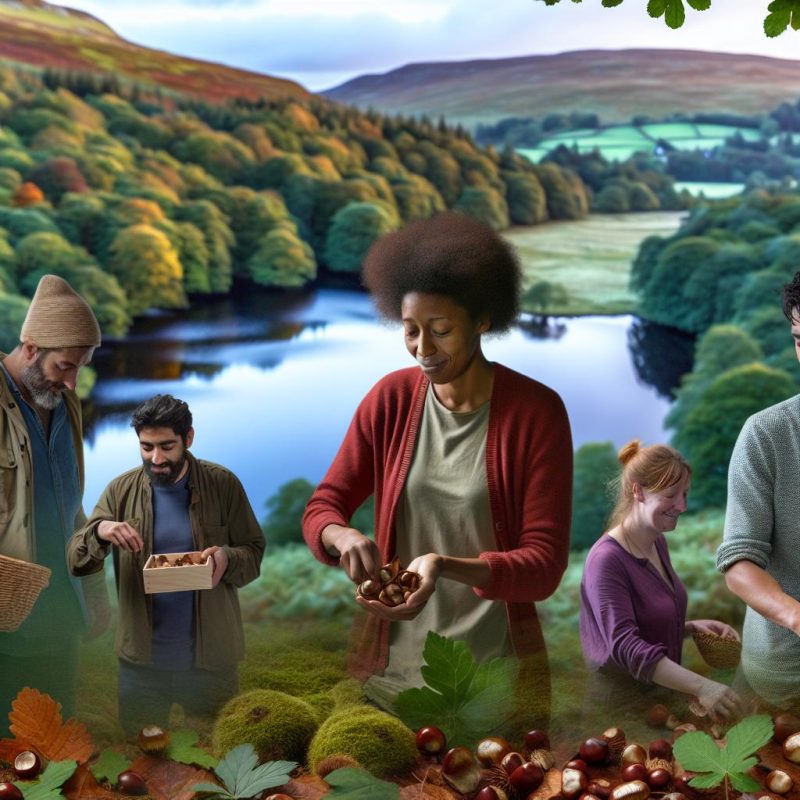Introduction to Foraging in Argyll
The countryside of Argyll, located in the west of Scotland, offers a rich and varied environment for foraging. Known for its diverse landscapes, Argyll includes coastlines, woodlands, and meadows, each supporting an array of edible plants and fungi. Foraging here is not only about finding food but also understanding and connecting with the natural world. With its scenic beauty and abundance of natural resources, Argyll presents a unique opportunity for individuals interested in exploring the gifts of nature in a responsible and sustainable manner.
Legal and Ethical Considerations
When it comes to foraging in Argyll, adhering to legal and ethical guidelines is of utmost importance. The Foragers Code is an essential resource that provides valuable insights into the principles of responsible foraging. One key aspect of foraging law involves seeking permission from landowners before gathering any natural produce. This ensures respect for property rights and fosters good relations between foragers and landowners.
Moreover, maintaining a sustainable approach is crucial. It involves harvesting only those elements of nature that are abundant and pose no threat to the ecosystem when removed. Overharvesting can lead to depletion of resources and negatively impact local biodiversity. To prevent this, foragers should take only what they need and leave behind enough to allow natural regeneration. Detailed information on sustainable practices can be found on Scottish Foraging’s website.
Commonly Found Edibles
Argyll’s varied habitats support a wide range of edible species that invite exploration and discovery. Along its picturesque coastal areas, individuals can often find samphire and a variety of seaweeds, which have been enjoyed for their unique tastes and nutritional benefits. These coastal greens are often used to add a salty, oceanic flavor to dishes.
Inland, the woodlands of Argyll are a treasure trove for mushroom enthusiasts, offering an assortment of fungi such as chanterelles and cep mushrooms. These mushrooms are prized for their distinct flavors and are often sought after by chefs and home cooks alike.
In the meadows and hedgerows, foragers can find wild raspberries and blackberries. These berries are not only easy to identify but also widely available during late summer, providing an excellent opportunity for both novices and experienced foragers to enjoy the fruit of their foraging efforts without much risk of misidentification.
Foraging Seasons
Foraging opportunities in Argyll span across the seasons, offering distinct discoveries as the year progresses. In spring, the countryside awakens, and foragers can seek out fresh shoots and young greens. Wild garlic and nettles are among the first plants to appear, and their versatility in the kitchen makes them popular choices.
As summer arrives, the landscape is transformed by a bounty of berries and edible flowers. This season is ideal for finding sweet, ripe fruits that can be enjoyed on their own or used in a variety of recipes. Summer foraging is often seen as a time of abundance and a chance to indulge in the diverse flavors offered by nature.
With the onset of autumn, the focus of foraging shifts toward mushrooms and nuts. Species such as chanterelles and hedgehog mushrooms become prevalent in the woodlands, capturing the interest of foragers who appreciate both the challenge of locating these fungi and the culinary uses they offer.
Preparing and Enjoying the Harvest
Once the harvest is gathered, preparing wild foods can range from simple to elaborate, depending on the ingredients and desired complexity of the dishes. Berries, for instance, can be enjoyed raw straight from the bush, offering a fresh and tangy treat. Alternatively, they can be transformed into jams or preserves, allowing the natural sweetness of the fruits to be captured and savored over time.
Mushrooms collected during foraging expeditions often require careful cleaning to remove any dirt or debris. Cooking is a key step that not only ensures safety by eliminating potential toxins but also enhances the flavor and texture of the fungi, making them a delightful addition to various dishes. Experimentation in the kitchen can yield a plethora of delightful dishes that celebrate the unique flavors of Argyll’s wild offerings.
Foraging in Argyll is a rewarding venture that combines culinary exploration with an appreciation for nature. By adhering to sustainable practices and learning about the local biodiversity, foragers can enjoy the bounties of the land responsibly. This pursuit allows individuals to deepen their understanding of the intricate connections between the environment and the food it provides.
For those interested in delving deeper into the guidelines and regulations related to foraging in the region, visiting the Argyll and Bute Council’s website can provide further information and resources. By learning about these local regulations, foragers can ensure that their activities align with communal efforts to preserve the natural beauty and resources of Argyll.
Engaging in foraging within Argyll represents a unique intersection of adventure, knowledge, and responsibility. It allows individuals to immerse themselves in the splendor of the natural world while cultivating skills and awareness that contribute to the conservation of precious local ecosystems. Whether one is a seasoned forager or a novice eager to embark on a new journey, the landscapes of Argyll offer both a classroom and a pantry for those wishing to explore nature’s bounty with respect and care.

